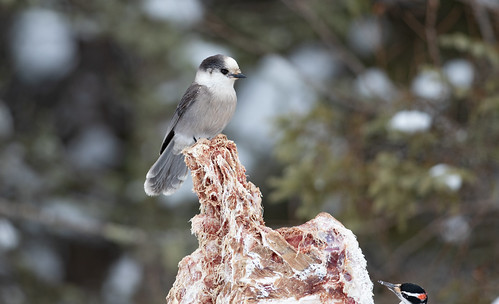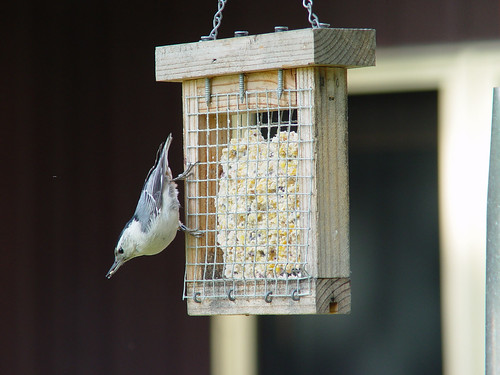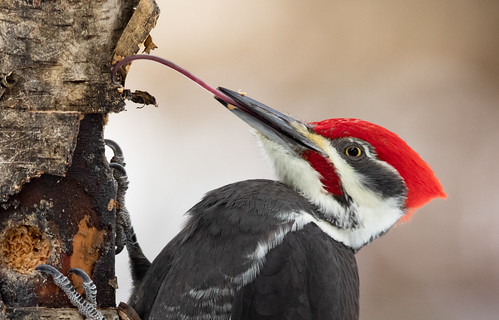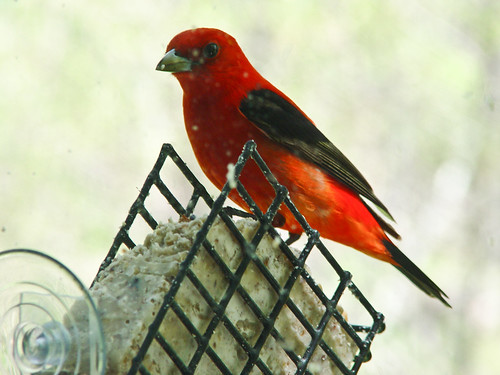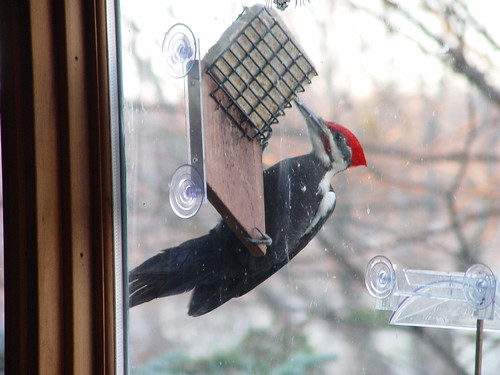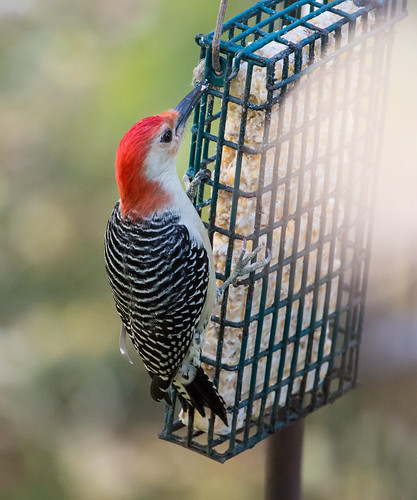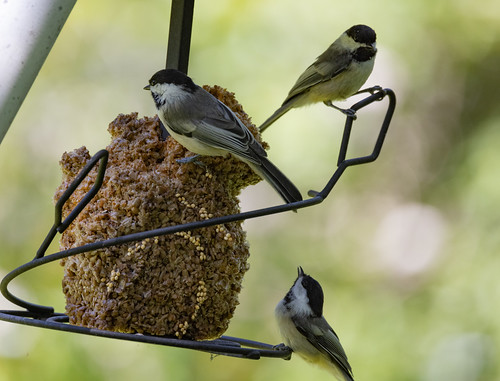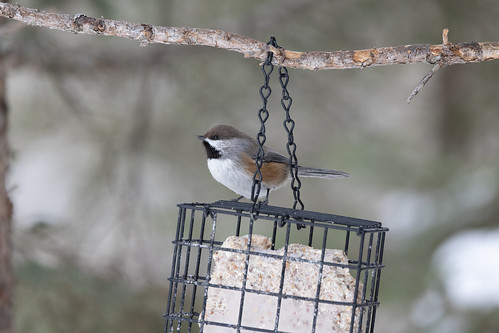Back in the 1970s when I started birding, you could go into just about any grocery store, ask the butcher for suet, and get as much as you wanted for free. They usually asked if you wanted real suet, which is the raw, hard fat found around the loins and kidneys of lamb, mutton, or, best of all for bird feeding, beef. If you didn’t know or care, butchers gave you mostly fat trimmings, which the birds seemed to like just as much as suet.
Hardly any grocery stores do their own butchering anymore. Those that have fat trimmings on hand charge for it, and charge much more for real suet. It’s simpler and more profitable to sell it to bird food manufacturers.
Some people who know how much birds need fat don't bother with suet. Deer hunters sometimes set out a whole rib cage for birds. In some cases, neighbors don't like looking at that, but some kind hunters save theirs to donate. The Friends of the Sax-Zim Bog set these out in various feeding stations, making it much easier for people to see Boreal Chickadees, Canada Jays, and other cool birds, and also the occasional Pine Marten or ermine. (I apparently have poor predator karma. I never seem to be there when those cool mammals show up.)
No matter how we offer raw fat, it should only put out in winter—raw suet, fat trimmings, and the meat and fat clinging to deer rib cages grow rancid when the temperature gets above freezing.
My mother-in-law and I put our raw chunks of fat in the homemade suet cages my father-in-law made using pieces of scrap wood and hardware cloth.
For a while, we also put suet in the plastic mesh bags onions came in, but in the 90s a “For the Birds” listener told me a heartbreaking story: she came home from work to find a dead Red-breasted Nuthatch on her suet, its foot entangled in the mesh. That not only made me stop using those bags outside but also got me into the habit of cutting onion bags into small pieces before throwing them out.
I didn’t learn about rendering suet until I read John V. Dennis’s A Complete Guide to Bird Feeding in the late 80s. Rendered suet stays fresh much, much longer than raw suet but involves heating the suet or fat trimmings until they're a hazardously hot, clear liquid, with everything that isn’t pure fat rising to the top. That must be skimmed off and discarded. Then, while the purified fat is still liquid, pour it into a square or rectangular cake pan and let it cool, when you can cut the white solid into whatever size squares or rectangles work for you.
Many people who go to all that trouble take it to the next level. Before the suet solidifies, they add various ingredients such as sunflower chips, peanuts, bits of fruits, or dried mealworms. I only rendered suet once in my life. It didn’t seem right to spend more time preparing food for wild birds than I do for my husband and kids.
As bird feeding grew increasingly popular and bird feeding stores started sprouting up here and there over the whole country, it became an easy matter to buy suet cakes and feeders to put them in. Newfangled suet cages use plastic-covered wire rather than bare hardware cloth, which is a big improvement—I don’t think bird tongues are nearly as moist as ours, so aren’t likely to stick to frozen metal, but I like to be on the safe side.
There are several kinds of commercial suet feeders, and different ways of setting them out. Some smaller ones that hold just one suet cake have suction cups to hook them up to window glass. Chickadees, nuthatches, and Downy Woodpeckers immediately came to mine, but it also drew some surprises. Back in November 2003, a Pine Warbler showed up.
In May 2004, during a frigid cold snap, some Scarlet Tanagers came right up to my window to feast.
And that tiny window feeder turned out to be a favorite of one of my Pileated Woodpeckers, too.
My father-in-law nailed his homemade suet feeders into his trees. Some people do that with commercial suet feeders, or tie them to a tree trunk or deck beam.
Most suet feeders are designed to be hung on poles, tree limbs, or hooks. Some are designed to hold one or two square suet cakes; others hold various cylindrical suet cakes.
My favorite suet feeder right now is made of recycled material, holds two suet cakes, and has an extension at the bottom, ideal for large woodpeckers to brace their tails. All my woodpeckers visit it, but especially my Pileated Woodpeckers.
I haven't found commercial suet cakes that are 100 percent suet in years. They all have various ingredients now, and like bags of mixed bird seed, commercial suet cakes can have more cheap fillers than nutritious ingredients. I don't buy ones that contain much cornmeal, oats, or other grains and seeds. Suet cakes with nuts, fruits, or mealworms provide more protein and fat, which birds need. Unfortunately, those better suet cakes often seem to attract more starlings than native birds. So I usually stick to cakes that are mostly suet, bought from a bird-feeding store that I trust. We lowly humans may be healthier if we avoid too much fat, but my backyard birds thrive living off the fat of the land.

